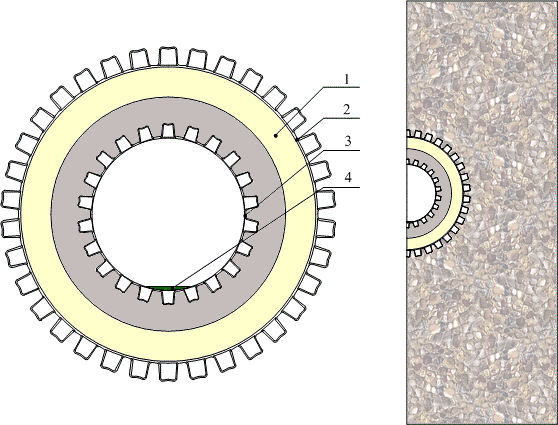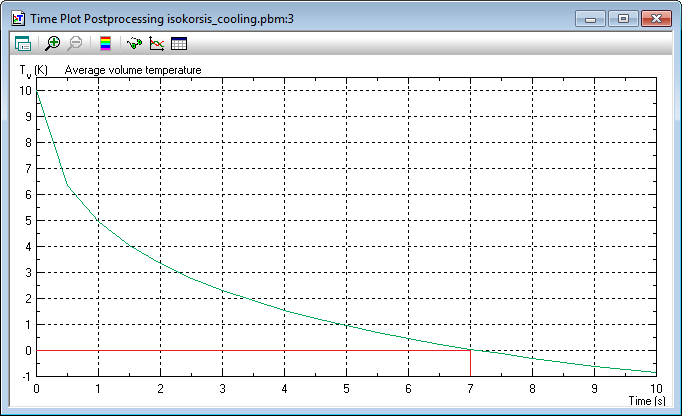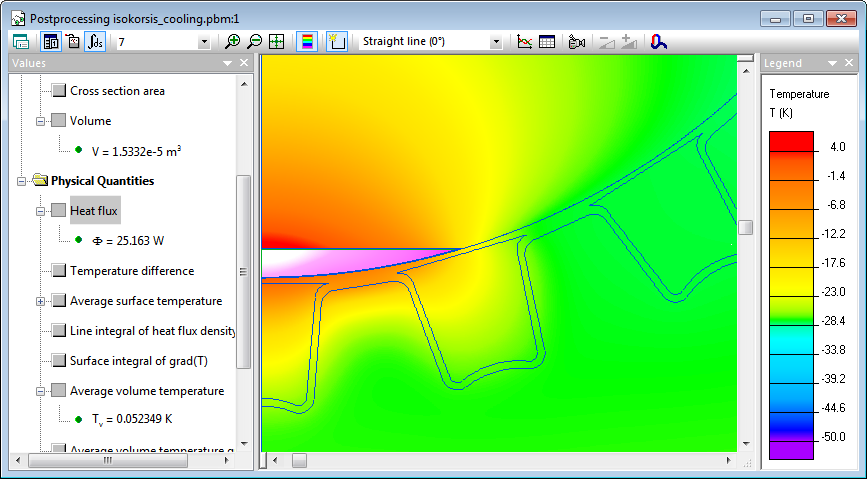ISOkorsis pipe system
QuickField simulation example
ISOkorsis pipes are designed for the free-flow sewerage systems and drainage in freezing soils (with a laying the depth less than the depth of seasonal freezing and permafrost conditions) when there is a risk of the pipes freezing. In the modeled system sewage water (+10 °C) occupies 2% of the pipe's cross-section. Velocity of the sewage water is 1 m/s. Sewage freeze as a result of heat exchange with the environment. It's necessary to calculate the sewage water freezing time and the maximum allowed length of the pipe.
Problem Type
Plane problems of steady-state and transient heat transfer.
Geometry

1 - insulation; 2 - outer pipe; 3 - inner pipe; 4 - sewage water.
Given
Initial temperature of the sewage water Tsewage = 10 °C;
Sewage water velocity v = 1 m/s;
Freezing depth of the soil h = 2.5 m;
Temperature of the air Tair = -50 °C
Task
Determine the sewage water freezing time and the maximum allowed length of the pipe to avoid the sewage freezing.
Solution
The solution consists of two stages:
- Initial temperature distribution in the empty tube is determined (steady-state heat transfer problem);
- Water is added to the pre-cooled tube. Sewage water then cools down to 0 °C. Time till the beginning of the water crystallization is calculated (transient heat transfer problem).
Result
It takes 7 seconds to cool down water from 10 °C to 0 °C. So after 7 seconds water begins to freeze. For the given flow rate of 1 m/s the maximum length of the pipe is 7 meters. If longer pipes are needed, it is necessary to use a heating system.


- View simulation report in PDF
- Download simulation files (files may be viewed using any QuickField Edition).